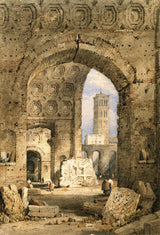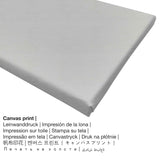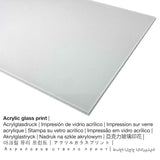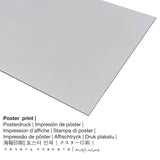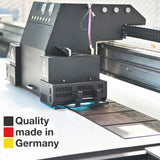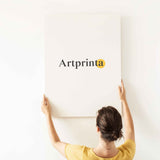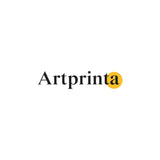Samuel Prout, 1850 - Ụlọ nsọ Udo, Nzukọ Ndị Rom - mbipụta nka mara mma
Ụtụ gụnyere. Mbupu gbakọrọ na ndenye ọpụpụ.
Ihe osise nwere aha Temple of Peace, Roman Forum dị ka ihe nka ebipụta
Ọrụ nka na aha Temple of Peace, Roman Forum onye omenkà mere ya Samuel Prout in 1850. The original version of the artwork was painted with the size: 17 x 11 7/8 nke anụ ọhịa ma were ihe osise ese Usoro of watercolour and gouache strengthened with pen and ink on off-white paper. Taa, ọrụ nka dị na nchịkọta nka nke Analọ ihe nkiri nka nke Indianapolis. The artpiece, nke bụ akụkụ nke ngalaba ọha a na-enye ya site n'ikike nke Analọ ihe nkiri nka nke Indianapolis.Ebe E Si Nweta nke ihe osise:. Ọzọkwa, alignment dị na eserese format na oke nke 2: 3, nke pụtara na ogologo bụ 33% mkpụmkpụ karịa obosara.
Ngwa ngwaahịa ị nwere ike ịhọrọ
The product dropdown menu provides you with the chance to pick your prefered material and size. You can choose your preferred size and material among the subsequent alternatives:
- Poster (akwa akwa akwa): The Artprinta poster is a UV printed sheet of flat cotton canvas with a nice structure on the surface, which resembles the actual version of the masterpiece. The printed poster is designed for framing your art print with the help of a personal frame. Please bear in mind, that depending on the size of the canvas poster print we add a white margin of something between 2-6 cm round about the painting, which facilitates the framing with your custom frame.
- Mbipụta kanvas: A canvas print, which should not be confused with a painting on a canvas, is a digital copy printed from a UV direct printing machine. A canvas generates a exclusive look of three dimensionality. Furthermore, a canvas creates a nice and pleasing ambience. Canvas prints are relatively low in weight, meaning that it is easy and straightforward to hang up the Canvas print without the help of any wall-mounts. A canvas print is suitable for any type of wall in your home.
- Aluminom dibond (ọkpụkpụ ọla): Aluminium Dibond prints are prints on metal with an outstanding depth effect - for a modern impression and non-reflective surface structure. The Direct Print on Aluminum Dibond is the perfect introduction to fine art reproductions with aluminum. The bright and white parts of the original work of art shimmer with a silky gloss, however without any glow. Colors are luminous and bright, details of the print appear very clear.
- Bipụta na enyo acrylic: An print on acrylic glass, which is sometimes described as a print on plexiglass, will change the original artwork into stunning décor. Moreover, the acrylic print makes a great alternative to canvas and dibond art prints. Your work of art is being made with state-of-the-art UV printing technology. With an acrylic glass fine art print contrasts and minor artwork details will be more identifiable because of the subtle tonal gradation of the picture. Our acrylic glass protects your selected art replica against light and heat for decades.
Legal note: We try our utmost to describe our products in as much detail as possible and to demonstrate them visually. At the same time, the pigments of the printed materials, as well as the printing can differ somehwat from the representation on your device's monitor. Depending on the screen settings and the quality of the surface, not all colors are printed as realistically as the digital version depicted here. Because all our art reproductions are processed and printed by hand, there might also be minor deviations in the motif's size and exact position.
Ozi ndabere ngwaahịa
| Ụdị ngwaahịa: | mmepụta nka |
| Mmeputakwa: | dijitalụ mmeputakwa |
| Usoro mmepụta: | Mbipụta UV ozugbo (mbipụta dijitalụ) |
| Production: | Germany |
| Ụdị ngwaahịa: | mmepụta ihe na-achọ |
| Ihe eji eme atụmatụ: | ime ụlọ, ịchọ mma mgbidi |
| Nhazi: | nhazi ihe osise |
| Njikwa oyiyi: | ogologo ruo obosara 2: 3 |
| Pụtara nha onyonyo: | ogologo bụ 33% mkpụmkpụ karịa obosara |
| Akụrụngwa ị nwere ike ịhọrọ: | acrylic glass print (nwere ezigbo mkpuchi iko), mbipụta akwụkwọ mmado (akwụkwọ kwaaji), mbipụta ọla (aluminium dibond), mbipụta akwụkwọ. |
| Canvas dị n'elu ihe nrịbama (mbipụta kanvas) nha dị iche iche: | 20x30cm - 8x12", 40x60cm - 16x24", 60x90cm - 24x35", 80x120cm - 31x47", 100x150cm - 39x59" |
| Mpempe iko acrylic (nwere ezigbo mkpuchi iko) nha dị iche iche: | 20x30cm - 8x12", 40x60cm - 16x24", 60x90cm - 24x35", 80x120cm - 31x47", 100x150cm - 39x59" |
| Nhọrọ nha nke akwụkwọ mmado (akwụkwọ kwaaji): | 40x60cm - 16x24", 60x90cm - 24x35", 80x120cm - 31x47" |
| Ụdị mbipụta Dibond (ihe alumnium) dị iche iche: | 20x30cm - 8x12", 40x60cm - 16x24", 60x90cm - 24x35", 80x120cm - 31x47" |
| ụba: | adịghị |
Data nka ahaziri
| Aha eserese ahụ: | "Temple of Peace, Roman Forum" |
| Nhazi: | sere |
| Otu izugbe: | nkà nke oge a |
| Narị afọ nka: | 19th narị afọ |
| Year: | 1850 |
| Afọ nka: | 170 afọ |
| Ihe osise izizi: | watercolour and gouache strengthened with pen and ink on off-white paper |
| Nha izizi (ọrụ nka): | 17 x 11 7/8 nke anụ ọhịa |
| Egosiputara na: | Analọ ihe nkiri nka nke Indianapolis |
| Ebe ngosi nka: | Indianapolis, Indiana, Njikota Obodo Amerika |
| Weebụsaịtị ihe ngosi nka: | www.discovernewfields.org |
| Licensedị ikike: | ngalaba ọha |
| Site n'aka: | Analọ ihe nkiri nka nke Indianapolis |
Ozi ndabere izugbe gbasara onye na-ese ihe
| Ihe nkiri: | Samuel Prout |
| A makwaara dịka: | Prout, S. Proutt, Prout Samuel, Samuel Prout |
| okike nke onye nka: | nwoke |
| Obodo onye nka: | British |
| Ọrụ onye na-ese ihe: | onye na-ese ihe, onye na-ese ihe |
| Obodo obibi: | United Kingdom |
| nhazi ọkwa: | omenkà nke oge a |
| Nwụrụ anwụ: | 69 afọ |
| Afọ ọmụmụ: | 1783 |
| Amụrụ na (ebe): | Plymouth, Obodo Plymouth, England, United Kingdom |
| Afọ ọnwụ: | 1852 |
| Nwuru na (ebe): | London, Greater London, England, United Kingdom |
Nwebiisinka © | www.artprinta.com (Artprinta)
What specifically does the website of the Indianapolis Museum of Art state about this artwork painted by Samuel Prout? (© - site na Indianapolis Museum of Art - Analọ ihe nkiri nka nke Indianapolis)
Gallery label: Besides his specialty in depicting time-worn medieval buildings, Prout created a sizeable body of watercolors of the classical ruins in the Roman Forum. He made his site sketches in 1824 and referred to them again and again over the next 25 years to produce numerous versions in watercolor from a single sketch. While the so-called Temple of Peace (actually the Basilica of Constantine) was not among Prout's most repeated subjects, its massive brick vaulting suited Prout's fascination with crumbling masonry.
Indianapolis Museum of Art Bequest of Kurt F. Pantzer

